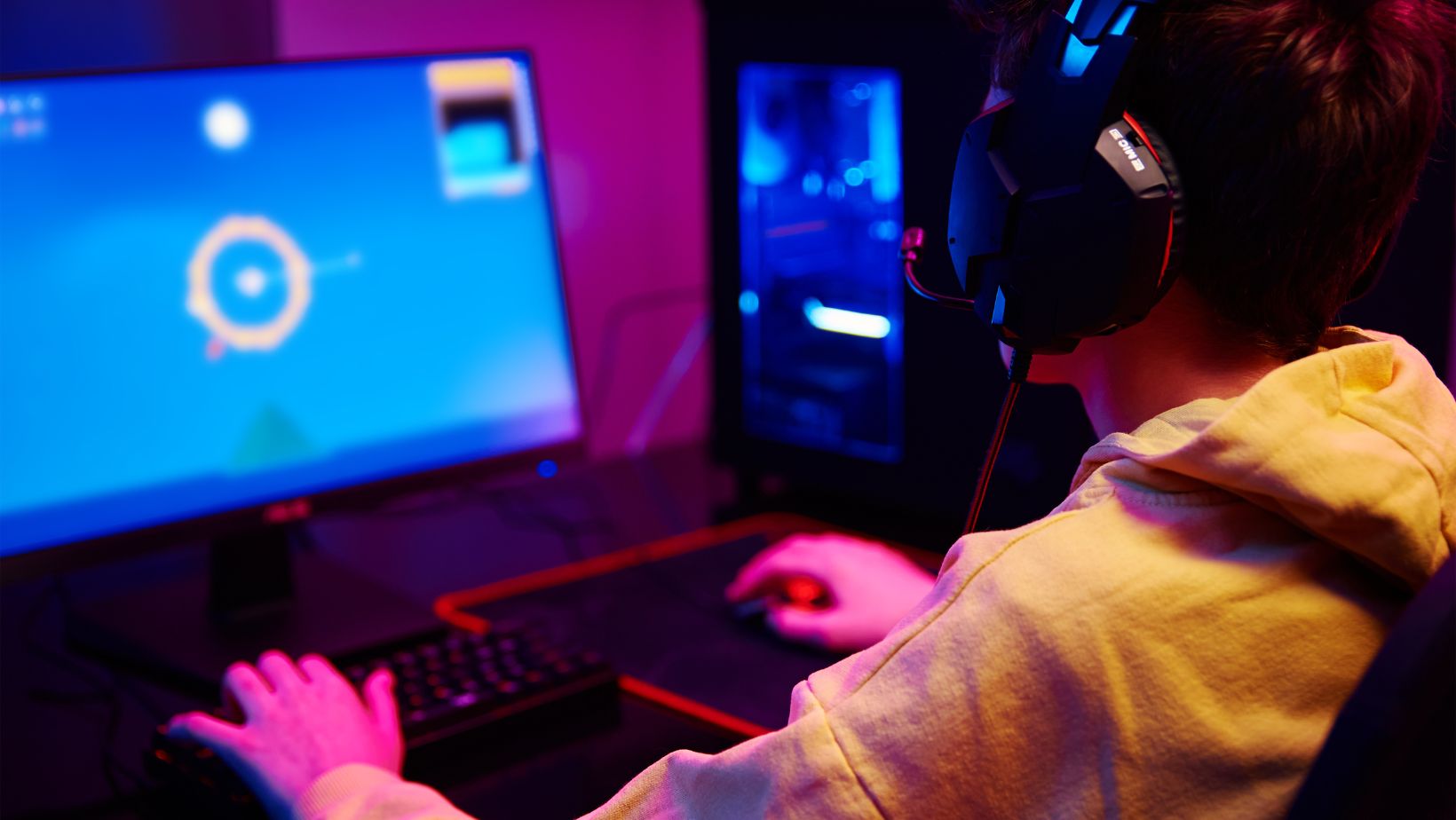The world of gaming technology is always changing, thanks to ongoing improvements and the growing expectations of players. We’re seeing big changes, from the improved visuals on today’s gaming systems to the realistic experiences offered by virtual and augmented reality. These advancements aren’t just about better hardware; they also include new software and online features that are changing how we play, connect, and experience digital worlds. This overview will look at the main trends and developments that are driving these changes.
The Rise of Cloud Gaming Platforms
The gaming industry underwent a major transformation because cloud gaming platforms entered the market. Users can play top-tier games via cloud gaming because this service streams titles directly through remote servers to virtually any device. Early attempts at cloud gaming started with OnLive in 2010 yet these attempts faced problems because of latency together with bandwidth issues. Cloud gaming services such as Xbox Cloud Gaming and NVIDIA GeForce NOW along with Amazon Luna have advanced through better infrastructure combined with compression algorithm technology. The main attraction comes from the ability for users to play hundreds of games without waiting for downloads and without needing to buy expensive hardware systems. Players benefit from convenient access to video games through cloud services but must pay costs of subscriptions along with the need for stable internet access. The technology brings difficulties to rural gamers even though it promises many advantages. The industry enhances streaming platforms through recent updates that aim to minimize input lag detectability and establish variable streaming speeds which adapt to network changes. The global spread of next-generation 5G networks creates excellent conditions for cloud gaming to emerge as a force that revolutionizes gaming accessibility.
Cross-Platform Integration and Social Gaming
Gaming’s social dimension has evolved far beyond simple multiplayer modes, with cross-platform play breaking down traditional barriers between gaming ecosystems. This integration reflects broader cultural shifts in how we connect through games. Much like how a hand and foot card game brings family members of different ages together around a physical table, digital platforms now enable similar connections across geographical and hardware boundaries. Games like Fortnite, Minecraft, and Rocket League pioneered this approach, allowing PlayStation, Xbox, Switch, PC, and mobile users to play together seamlessly. The technical challenges of harmonizing different control schemes and ensuring fair play across platforms have required sophisticated matchmaking algorithms that consider input methods alongside skill levels. Voice chat integration across platforms has evolved similarly, with discord becoming the de facto communication hub that bridges these formerly separate gaming communities.
Haptic Feedback and Physical Sensation
The pursuit of immersion in gaming has led to remarkable advancements in haptic feedback technologies that engage our sense of touch in increasingly sophisticated ways. Modern controllers have evolved far beyond the simple rumble features introduced in the 1990s, now incorporating precision actuators capable of mimicking specific sensations like rainfall, weapon recoil, or surface textures.

Sony’s DualSense controller represents a significant leap forward with adaptive triggers that can create variable resistance, simulating actions like drawing a bowstring or the increasing pressure needed to depress a brake pedal. This physical dimension adds substantial depth to gameplay experiences, creating memorable moments that engage multiple senses simultaneously. These technologies are expanding beyond traditional controllers as well, with haptic vests entering the market that can simulate impact across different body regions, adding directionality to in-game damage or environmental effects. Specialized gloves with micro-actuators now allow players to “feel” virtual objects, distinguishing between textures and weights in virtual reality environments.
Artificial Intelligence in Game Design and Experiences
Artificial intelligence has transformed from a marketing buzzword to a fundamental component of modern game development, revolutionizing both creation processes and player experiences. Procedural generation algorithms now create vast, unique worlds with their own ecologies and histories, enabling games like No Man’s Sky to offer quintillions of planets too numerous for any human design team to craft individually. These systems have grown increasingly sophisticated, generating not just landscapes but coherent narratives, character behaviors, and dynamic quests that respond to player actions. On the gameplay front, adversarial AI has evolved beyond simple pattern-based opponents to create challenging experiences that adapt to player strategies. Games like Alien: Isolation use behavior trees and sensory systems to create unpredictable enemies that learn from player tendencies, while strategy games employ neural networks trained on thousands of matches to provide compelling opposition. Perhaps most intriguingly, AI now shapes individual player experiences through dynamic difficulty adjustment that subtly modifies challenges based on performance, keeping players in the psychological “flow state” between boredom and frustration. While concerns persist about AI potentially homogenizing creative processes, the technology increasingly serves as an amplifier for human creativity rather than a replacement, enabling smaller studios to create experiences of remarkable scope and depth.
Virtual and Augmented Reality Advancements
Virtual and augmented reality technologies have progressed far beyond their initial novelty phase, establishing themselves as legitimate gaming platforms with unique capabilities and growing audiences. Hardware improvements have addressed many early limitations—modern VR headsets offer higher resolution displays eliminating the “screen door effect” that plagued first-generation devices, while wider field-of-view optics create more natural peripheral vision. Tracking systems have evolved from external sensors to inside-out camera arrays that enable six degrees of freedom without complicated setup procedures. Perhaps most significantly, wireless capabilities have liberated players from restrictive cables, allowing natural movement without fear of entanglement. On the software front, developers have refined VR-specific design languages that accommodate the technology’s strengths and limitations. Motion sickness issues have been mitigated through techniques like teleportation movement, vignetting during rapid motion, and maintaining stable reference points. Devices like Microsoft’s HoloLens demonstrate the potential for mixed reality gaming that transforms living spaces into interactive playgrounds. The technology still faces challenges—particularly in making hardware more affordable and comfortable for extended sessions—but continues to mature rapidly. As standalone headsets become more powerful and lightweight, VR and AR appear increasingly positioned to evolve from gaming subgenres into distinct interactive mediums with their own unique creative possibilities.
Sustainable and Accessible Gaming Technologies
The gaming industry has increasingly recognized its environmental impact and accessibility shortcomings, developing innovative technologies that address both concerns simultaneously.

Power efficiency has become a central design principle in modern gaming hardware, with manufacturers significantly reducing consumption through adaptive power management, more efficient processors, and cloud-based processing that shifts energy-intensive computation to optimized data centers. Console manufacturers have redesigned packaging to eliminate plastics, while game distribution continues shifting toward digital formats that reduce physical production and transportation impacts. Sustainability extends to hardware durability as well—companies increasingly design for repairability and component upgradeability rather than complete replacement cycles, reducing electronic waste. On the accessibility front, technological innovations have made gaming more inclusive for players with diverse abilities. Adaptive controllers like Microsoft’s XAC provide customizable interfaces for players with limited mobility, while eye-tracking technologies enable gameplay without traditional manual inputs. Software features like colorblind modes, adjustable text sizes, and comprehensive subtitle options have become industry standards rather than afterthoughts. Perhaps most significantly, accessibility features increasingly benefit all players—features originally designed for specific needs often improve general usability, creating a virtuous cycle of inclusive design. Game engines now include accessibility testing modules that identify potential barriers during development rather than after release.
Conclusion
Basically, gaming technologies are changing very quickly, due to better hardware, new software, and more people connecting online. The desire for more realistic, interactive, and social gaming experiences is pushing this fast change. As technologies like cloud gaming, artificial intelligence, and virtual and augmented reality continue to develop, the future of gaming looks to be even more dynamic and transformative. It’s making the difference between the digital and real worlds less clear and changing what we think of as play.
